She came from an illustrious family, was educated and intelligent. And yet her mother was reluctant to marry her off. When she remembered about her, she chose the girl a simplistic, poor and influential candidate. A man who couldn't bring her neither happiness nor even respect.
Zofia was the third child of Zygmunt Stary and Bona Sforza. She was born on July 13, 1522 in Kraków. She spent her childhood with sisters Anna and Katarzyna. The upbringing of her daughters was taken care of by Bona, who influenced them significantly with her temperament and character. Zofia received a thorough education, exceeding in many respects the level of education of girls from the upper classes in the 16th century. She was fluent in foreign languages (she knew Italian and Latin, among others), was interested in science, literature and art. She herself was characterized by inborn cleverness and intelligence. All this will later result in a widespread opinion of Sophia as a wise and understanding princess. Zofia, the oldest and most resolute of the three sisters - Anna Brzezińska writes about her in her new novel Daughters of Wawel .
On the way to old age
Bona cared for her daughters, but due to her strong commitment to politics, she neglected the issue of their proper marriage. In addition, after the death of Zygmunt Stary, she had a conflict with her son and left with the princesses for Masovia, where - consciously or not - she condemned girls away from the royal court to the old manhood. Admittedly, more proposals were coming from abroad, but due to the lack of interest in Zygmunt August, they remained only empty declarations.
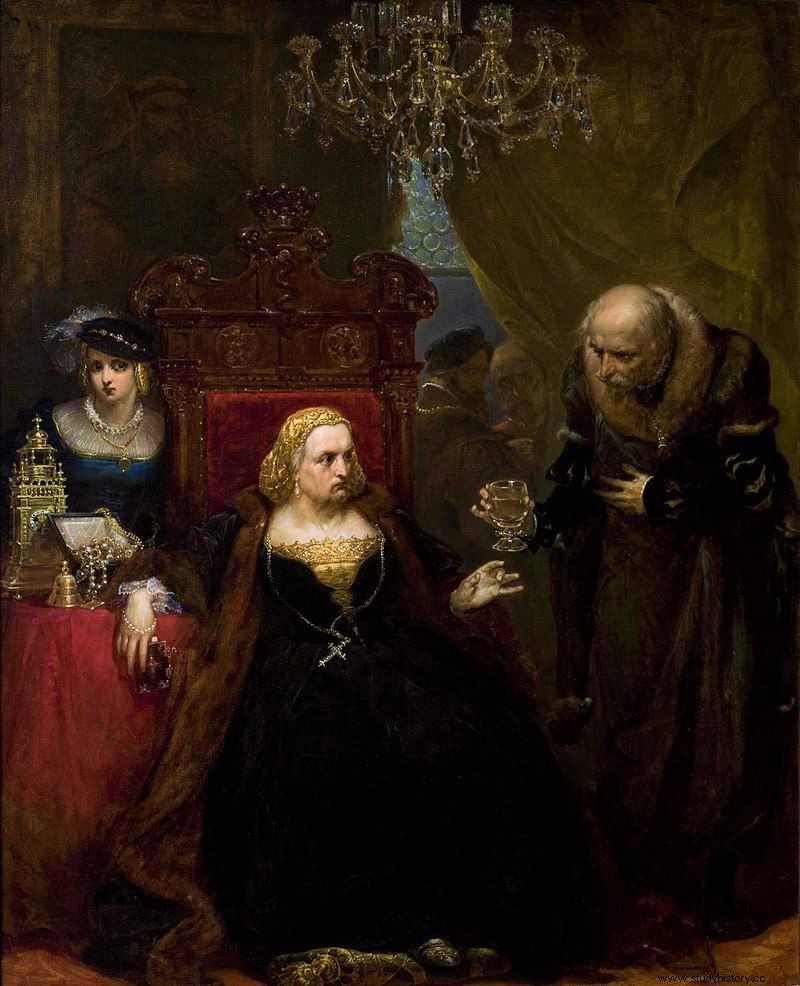
The conflict between Bona and Zygmunt August caused the queen and her daughters to leave for Mazovia. There, young Jagiellonian girls slowly withered in starvation, waiting for the king's decisions. The illustration shows a painting by Jan Matejko showing the scene of Bona poisoning.
Sophie - a pretty, graceful and intelligent lady - tried to be married off to King Henry VIII of England (it is scary to think what her fate was as the wife of this brute ...), one of the margraves of Baden, the Prussian prince Albrecht Hohenzollern and his nephew, a well-known adventurer, Albrecht Alcybiades . However, none of the plans was realized. Meanwhile, the princesses, deprived of their brother's interest, instead of becoming an important asset in the foreign policy of Sigismund Augustus, were wasted in provincial Ujazdów near Warsaw, waiting for a change in their fate ...
Mother argues with son
In 1552, the exasperated Bona met Zygmunt August in Radom. A dramatic conversation took place there, in which the mother and son accused each other of being slow to marry the queens. Without coming to any consensus, they parted ways again in anger.
The next two meetings also did not change the situation of young Jagiellonian women. The chance to improve their fate appeared only three years later. The Duke of Brunswick, Henry the Younger, sent an envoy to Poland in August 1555 with a proposal to marry one of the queens. Both Bona and Zygmunt August agreed. According to the custom, the candidate was supposed to be the eldest of the sisters - Zofia.
A trip is needed!
It was unfortunate that, unfortunately, the princess fell seriously ill at that time and it was not known whether she would recover at all. Her health was so serious that Henryk's envoys could not even see her. In this situation, desperate Bona, not wanting to miss an opportunity to marry at least one of her daughters, offered them Anna instead of Zofia. As Hetman Jan Tarnowski wrote in his letter:
(...) Princess Sophia is sick, it is better to marry Princess Anne to this prince and send the envoys ready with something ready, and with nothing (...) For His Majesty the King it is better and there will be, because there will be less expenses and less work when two sisters keep only and not more. However, Zofia soon recovered and it was possible to start drawing up an appropriate marriage contract. Therefore, in Warsaw, the princess's expedition was hastily organized. As the royal secretary, Rafał Wagrawski, wrote, no thing was ready for the horse's okra but three cradles . Previously, probably no one, including the mother, believed that it would be possible to finally marry a princess ...
On January 29, 1556, Zofia, bid farewell by her mother and sisters, left Warsaw forever to go to meet her future husband, whom she had never seen before. Her marriage was a typical power contract - says Anna Brzezińska. And as befits the contract, a letter was also written in which Zofia undertook to renounce the succession from both her father and brother, as well as from her mother.
Married to a werewolf and rapist
For whom was the still young (by our standards), intelligent and educated princess issued? Her husband was to be the old, 66-year-old Prince of Brunswick, Henry of the Welfa family (called the Younger despite his age). He belonged to the lesser German princes and ruled only one part of the Duchy of Braunschweig.
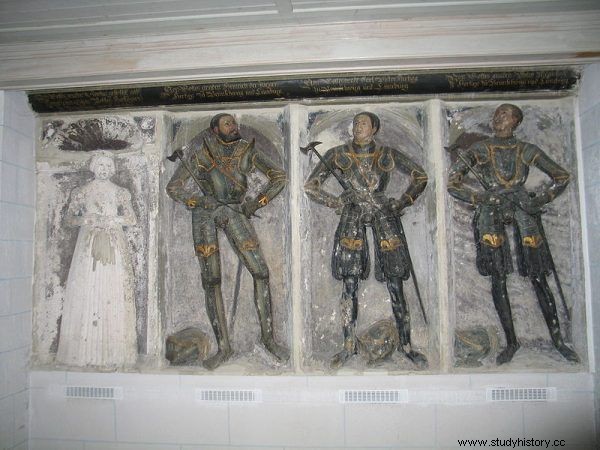
Tomb of Prince Henry, his wife Sophia and two sons in the Church of the Blessed Virgin Mary in Wolfenbüttel. The duchess, humiliated by her husband, was buried by his side…
It was difficult to find a man less suited to the subtle Zofia. Henryk was passionate about warfare and hunting, an unpredictable and impetuous knight, valuing the sword more than books. It was not without reason that he was called a "wild man", "werewolf", "arsonist" and "rapist". Martin Luther himself criticized him in a brochure devoted to him entitled Wider Hans Worst . He had no understanding of science and culture, and his strong Catholicism resulted from conservatism rather than from a real commitment to the truths of faith.
The Prince's Second Family
Henryk was also the hero of a scandal that was famous in Germany.
Prince Henry, the wife of his late wife, Maria, Princess of Württemberg, was so humiliated and humiliated [...] that she died of grief. He kidnapped her from the fraucimer, and the fact that she was baptized with the name Ewa and also turned out to be a sinner, gladly followed the grace of the prince. And so the prince had an honest and pious wife, but he lived in open shamelessness with that evil Eve and begot bastards. And when the thing grew loud and his relatives began to speak out against him, in order to fog their eyes to all, he announced that his mistress had suffered from the plague and died. He even arranged a funeral for her, but ordered to put a wax doll in the coffin, dressed in the garb of that dishonest lover. Meanwhile, the prince herself took her away and kept her in a remote castle, so that no one would prevent him from accessing her - we read in Daughters of Wawel .
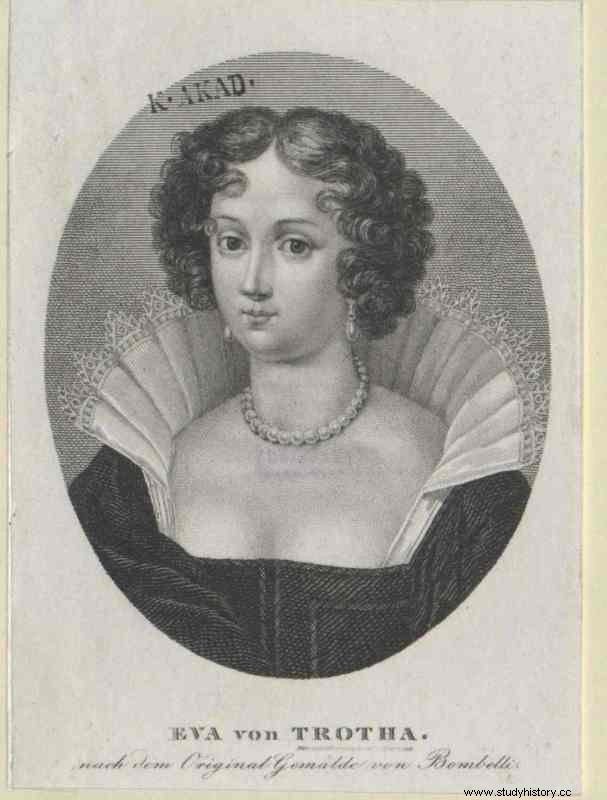
Henryk's lover, Ewa von Trott, was a living humiliation of Zofia. While the Duchess was childless, her husband's lover bore him as many as ten children. The illustration shows a portrait of von Trott by Sebastian Bombelli.
Although the high-profile public scandals are often somewhat exaggerated, in this case rumor has given way to truth. The prince had for years supported his "unofficial" family, which included his long-time lover, Ewa von Trott, along with ten children born outside the marriage bed. Henry gave his concubine a good and a castle, and one of their sons, Heinrich, not only was his father's horse, but he was also taken into account as a possible heir to the throne ...
Tomorrow, or in four weeks
The fate of Zofia was apparently unenviable. The prince, as an avid hunter, would often and long go hunting, leaving his wife alone. He did not have the courage to talk to her because she was "too learned" for him. He sent letters from hunting in which he wrote: if I don't come back tomorrow, I'll be there in four weeks ... Even if he wanted to discuss with his wife, another barrier stood in the way - the language one. Zofia did not know German, and he - spoke Latin poorly.
The princely court in the capital of Braunschweig, Wolfenbüttel - a small town, destroyed during the recent religious wars - did not resemble the magnificent Kraków manor, where there was always something going on and hundreds of people, including Renaissance poets, scholars and artists. As the duchess's biographers write, despite all these differences, relations between Henryk and Zofia gradually improved, and the old prince respected and had affection for his wife.
Conflict with stepson
However, Zofia's situation worsened after the death of Henry, who died in June 1568. According to the marriage contract, the duchess had to move to the town of Schöningen, where, as a widow, she received a residence and two local starosts. In theory, she could dispose of her goods on her own. However, it soon turned out that the autonomous rule of Sophia, even on a patch of land, did not please the new ruler of Braunschweig, the son of Henry from his first marriage, Julius.
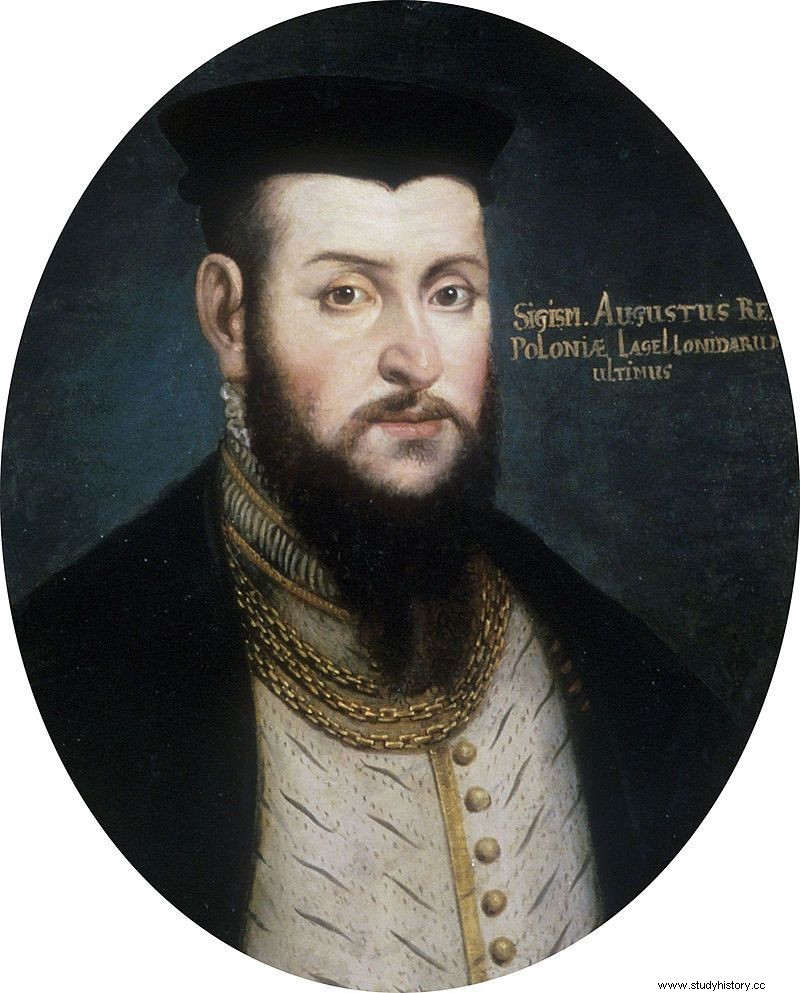
Zygmunt August, busy with matters in the country, did not respond to the pleading appeals of his sister, who, in conflict with her stepson, fought for the remnants of dignity. Left to herself, she turned to Emperor Maximilian II for help.
As might be expected, the duchess had a conflict with her stepson. Sophie sent pleading letters asking for help both to Sigismund Augustus, Joachim, the Elector of Brandenburg, and the Emperor. After numerous diplomatic interventions, the dispute was formally settled. However, there were still some misunderstandings. Finally, forced to a last resort, Sophia asked for the protection of the emperor. In exchange for various concessions on her part, he issued a protective letter in which he provided the princess with protection in the Reich.
Threads from the decline
Duchess Zofia was humiliated not only by her family. After the death of Zygmunt August, the senators of the Most Serene Republic of Poland did not spare her either. The dying king bequeathed to his three sisters - Catherine, Sophia and Anna - considerable goods in Poland and Lithuania, as well as, inter alia, the principalities of Bari and Rossano, real estate in the principality of Naples, jewels, armor and even harnesses
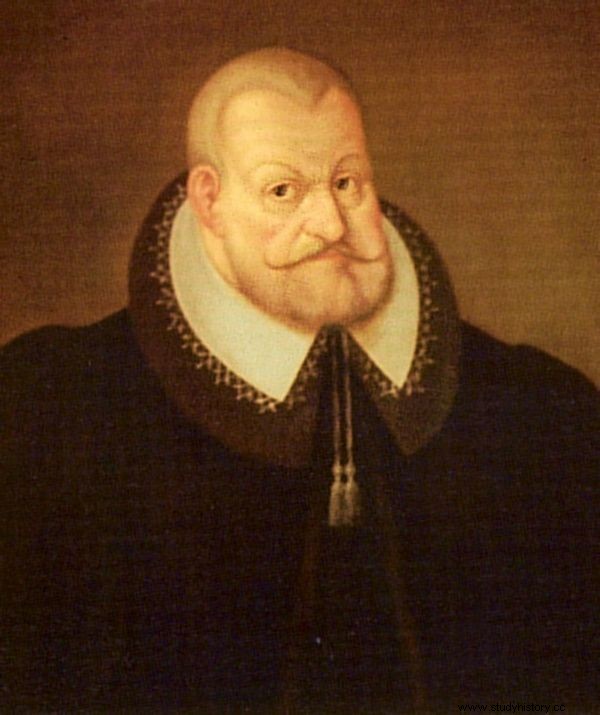
Julius, son of Henry and the official heir of the Brunswick principality, finally got his way. After Zofia's death, he seized all her property, which the duchess bequeathed to her relatives and countrymen.
.
Zofia started a fight to enforce the provisions and for many years she tried to obtain the part of the property she was entitled to in the Commonwealth. She sent letters and deputies, appealed and asked. Senators responded casually and postponed the matter to be dealt with for future parliaments. In the course of these efforts, the Duchess died. Some attributed her death to the griefs and pain caused by the ingratitude of Poles.
The stepson takes over the will
As if in spite of this ingratitude, she herself ordered in her will ( nota bene drawn up in Polish) so that many of its valuables and valuables go to the treasury of the Republic of Poland and raise the prestige of the Polish monarch. She ordered a new royal crown to be made of the most valuable jewels, as well as two golden sceptres, two apples, a sword in a golden scabbard set with precious stones, and a rich royal coronation garment.
As soon as Prince Juliusz found out about Zofia's generous bequest for sisters, major cities of the Commonwealth, the Krakow Academy, and even officials and servants - he took over the will. After the hurried burial of the Jagiellonian princess in Wolfenbüttel, all her movable and immovable goods were instantly seized ...
Bibliography
- Małgorzata Duczmal, Jagiellons. Biographical Lexicon , Wydawnictwo Literackie, Krakow 1996.
- Anna Brzezińska, Daughters of Wawel , Wydawnictwo Literackie, Krakow 2017.
- Maria Bogucka, Bona Sforza , Ossolineum, Wrocław 1989.
- Jan Pirożyński, Zofia Jagiellonka (1522-1575) and her collection , PAU, Krakow 2004.
